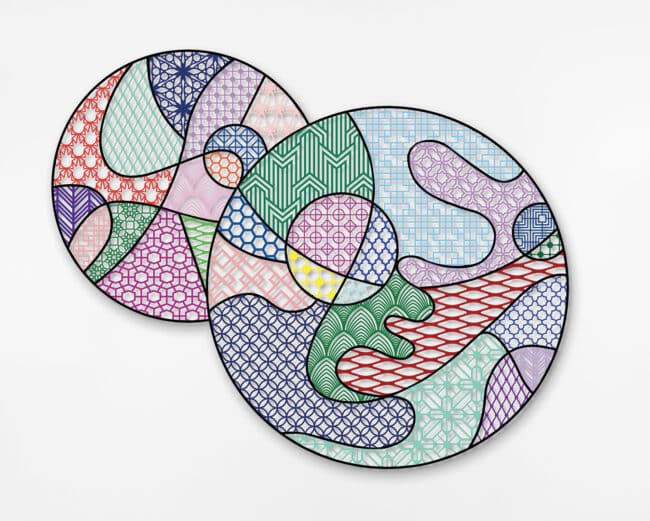Metamorphosis explores the artist’s role as an agent of transformation. Anchored in the metaphor of the artist as alchemist, this exhibition considers how contemporary makers rework the physical and symbolic properties of their materials, engaging deeply with the histories, identities and ideologies embedded within them. Just as alchemists sought to transmute base elements via the combination of magic and science, the artists here reshape clay, metal, fabric, painting and even cultural norms to reflect and remake the world around them.
At its core, Metamorphosis celebrates the fluidity and potential of materials, revealing their capacity to hold contradictions, evoke memory and provoke change. The exhibition also highlights how artists challenge dominant narratives by reinterpreting colonial histories, amplifying marginalized voices or exposing environmental damage. They draw from folk traditions, ancestral knowledge, craft legacies and the principles of design to create a dialogue between the handmade and the mass-produced.
A central example of the artist as alchemist is Kimiyo Mishima. Her ceramic works blur the boundary between imitation and reality, transforming clay into strikingly accurate replicas of newspapers, cardboard and plastic packaging. Mishima uses matte glazes and silkscreen techniques to render fragile clay as industrial waste, challenging perception and material expectations.
Anne von Freyburg blurs the line between high art and craft by reimagining 18th-century Dutch floral compositions with synthetic fabrics like PVC, sequins and hand-dyed tassels. Her works place fiber in dialogue with oil painting’s elite tradition. Across the gallery, Kehinde Wiley reframes Black identity through figurative sculpture. His portrait echoes the traditional Malian Dogon Couple, with sitters posed in a friendly embrace before African wax print backdrops—symbols of cultural pride and visual power.
El Anatsui and Patrick Bongoy explore the politics of material construction. Anatsui’s shimmering wall hangings made from discarded bottle caps evoke West African textiles while commenting on global economies of waste. Bongoy’s sculptural work, constructed from salvaged latex, reflects Congo’s landscape, which has been shaped by colonial trade.
Ceramists Reycita Naranjo and Toshiko Takaezu offer a personal approach to clay. Drawing from Native and Japanese American traditions, respectively, both artists extend—not replicate—ancestral forms. Their works embody transformation through technical refinement, symbolism and abstraction.
Similarly, many of the works in this exhibition reflect the artists’ dedication and mastery of mediums, especially in seeking their elevation through conceptual rigor and political inquiry. In doing so, they shift value away from speed and mass production toward care, process and intention. These works don’t merely reflect transformation; they enact it, socially and politically.
This exhibition is made possible with support from the Harn Annual Fund.



